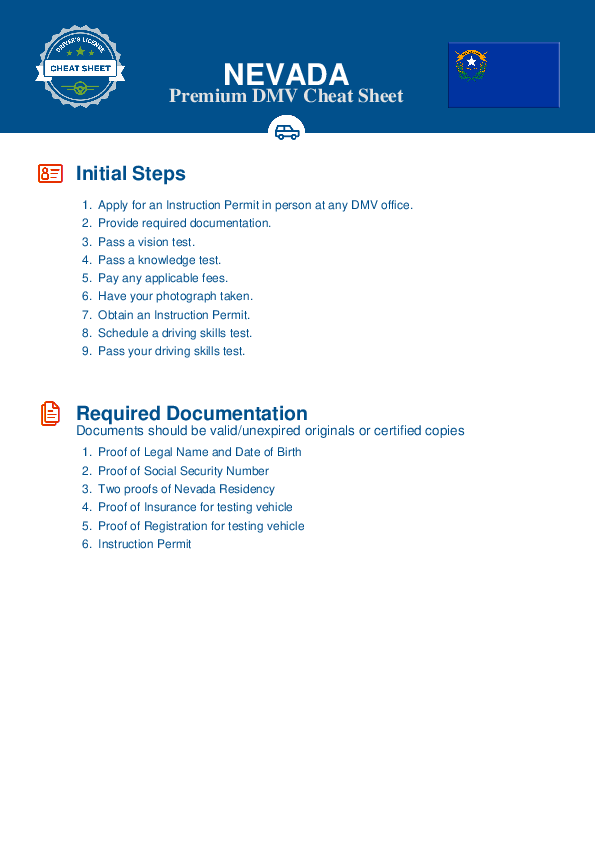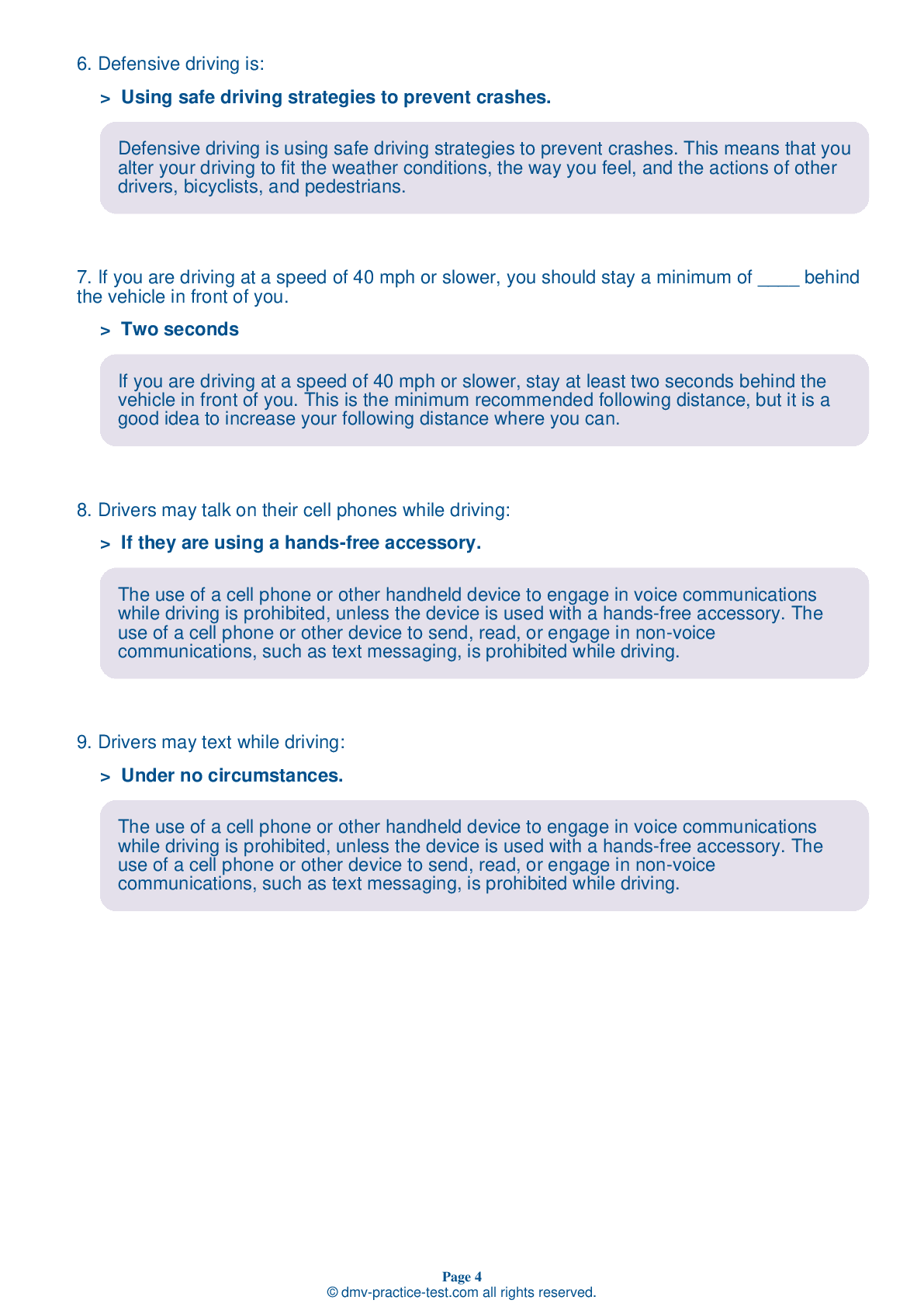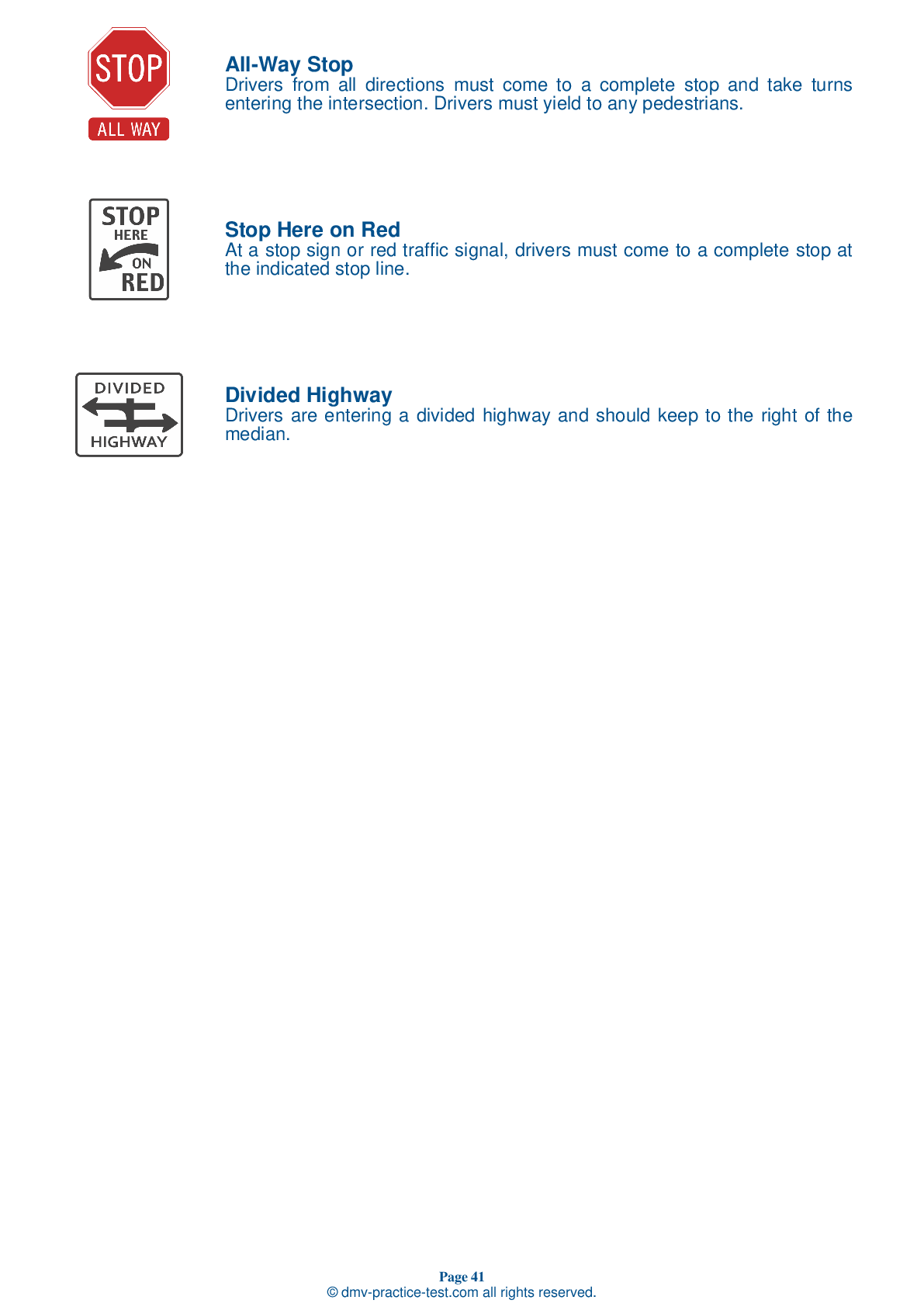FREE Nevada DMV Practice Test #1 Page 7 of 7
The Nevada DMV practise examinations have been updated for January 2025. It includes questions based on the Nevada Driver Handbook's most significant traffic signals and legislation for 2025. Use actual questions that are very similar (often identical!) to the DMV driving permit test and driver's licence exam to study for the DMV driving permit test and driver's licence exam.
On the practise exam, each question gets a tip and explanation to help you remember the concepts. The written component of the official Nevada DMV test will include questions about traffic rules, traffic signs, and driving statutes, as well as knowledge from the Driver Handbook.
To obtain a passing grade, you must correctly answer 40 of the 50 questions. To help you prepare for your instruction permit or driver's licence, take our Nevada DMV practise test.
The DMV exam is available in several languages.
Using any kind of testing assistance will result in an automatic fail, and the DMV may take additional action against your driver's licence, so stay away from it.
43 . You are driving when it begins to rain. You should:
When heavy rain reduces visibility, reduce your speed. Turn on your headlights so other drivers can see your vehicle. If the rain is so heavy that you are unable to see clearly, drive onto the shoulder and stop until the rain lets up.
44 . You are coming to an intersection and have a green light. Pedestrians are crossing against the red. You should:
Yield to pedestrians and cars that may be caught in an intersection when you have a green light. Be careful around pedestrians under every circumstance.
45 . A speed limit is:
A speed limit is the maximum or minimum legal speed you can travel on a road under ideal conditions. You may drive more slowly than the posted speed, but it is illegal to drive any faster. You must drive more slowly where signs or signs indicate a school zone or work zone speed limit. If conditions such as road construction or bad weather make the posted speed unsafe, drive under the speed limit.
46 . What is a "No zone?"
"No zones" are the large blind spots around trucks and other large vehicles. Drivers of smaller vehicles should avoid lingering in "No zones."
47 . What does a single dashed white line separating traffic mean?
White lines separate lanes of traffic that are moving in the same direction. Dashed white lines may be crossed to pass or change lanes, if it is safe to do so.
48 . If you miss your exit on an interstate expressway:
If you miss your turn or exit, do not back up or try to turn around on the highway. Go to the next exit and safely turn around.
49 . This sign means:




